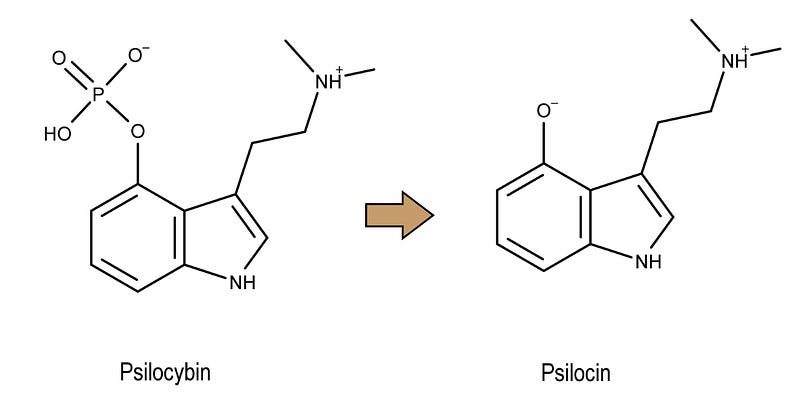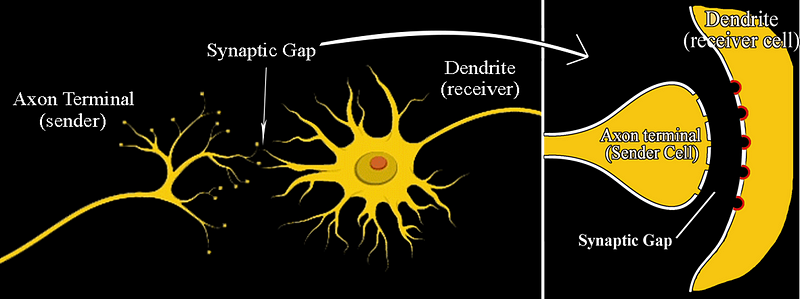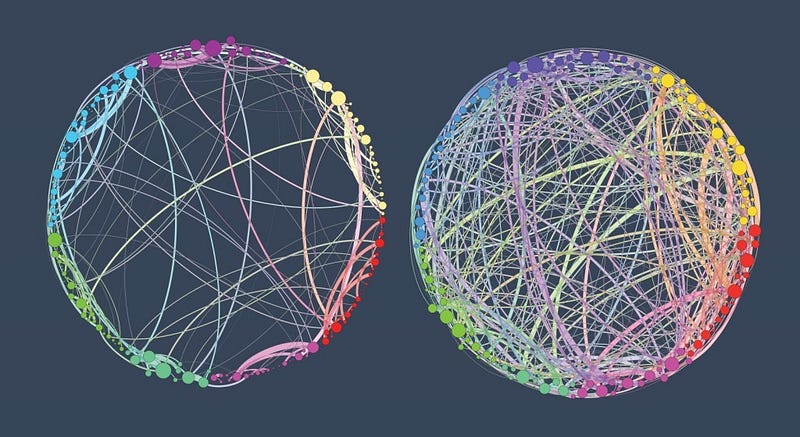Exploring the Intricacies of Magic Mushrooms and the Brain
Written on
Chapter 1: Understanding Magic Mushrooms
Magic mushrooms, scientifically referred to as Psilocybe Cubensis, are naturally occurring fungi that contain a psychedelic compound known as psilocybin. These mushrooms are classified as hallucinogenic substances, leading to a range of effects that can differ widely among individuals. Common experiences include intense feelings of joy, increased empathy, heightened sensitivity to sensory inputs, altered perceptions of color and sound, and a deeper introspective awareness.
Historically, magic mushrooms have faced scrutiny and regulatory restrictions, particularly following the drug crackdowns in the 1970s, which categorized many substances, including magic mushrooms, as illegal. The DEA classifies Schedule 1 substances as having no recognized medical use and a high potential for abuse. Despite this classification, numerous studies suggest that psilocybin could be beneficial in treating mental health issues such as depression and anxiety. Notably, psilocybin does not accumulate in the body and can lose effectiveness with repeated use, which limits its potential for misuse.
These remarkable mushrooms have been utilized by humans for millennia, showcasing their natural origins and possible role in the development of human consciousness. Now, let's delve into their mechanisms of action within the brain.

Chapter 2: The Role of Psilocybin
Psilocybin is the psychoactive compound found in magic mushrooms, which the body converts into psilocin upon consumption. Psilocin, a structural analog of DMT, is responsible for the psychedelic effects experienced by users.

DMT, which the body naturally produces, is associated with dream-like states, particularly in REM sleep. This has led to the hypothesis that DMT could play a role in our nightly dreams. Psilocin shares similarities with DMT and can induce a similar state while the individual remains awake, primarily acting in two key ways.
Section 2.1: Psilocin and Serotonin
First, psilocin stimulates a specific serotonin receptor, known as 5HT2A, which is involved in regulating perception, mood, and imagination.

The brain communicates through neurons, which send signals across a tiny gap called the synapse using neurotransmitters. Each neurotransmitter has a unique receptor that it can activate, much like a key fitting into a lock. Psilocin resembles serotonin closely enough that it can activate the 5HT2A receptor, resulting in hallucinogenic experiences, often described as dream-like states.
These receptors predominantly exist in the cortex, an area of the brain linked to reasoning and rational thought, and are integral to the psychedelic experience.

Section 2.2: The Default Mode Network
The second significant effect of psilocin is its ability to temporarily inhibit the Default Mode Network (DMN). This network is crucial for processing thoughts about the past and future, and is central to our sense of self.
Psilocin disrupts the usual connectivity within the DMN, prompting the brain to forge new connections and communicate in unprecedented ways.

This alteration in brain connectivity can lead to an extraordinary increase in interactions between regions that typically do not communicate. Notably, these connections may persist even after the effects of psilocybin have diminished.

The intriguing qualities of magic mushrooms lie in their capacity to enhance brain connectivity and facilitate profound introspection. Ongoing research, particularly by organizations like MAPS, is exploring the potential of psychedelics in therapeutic contexts, revealing promising avenues for addressing mental health issues such as depression, anxiety, and PTSD.
This video titled "Science of Drugs: What Do Magic Mushrooms Do To Your Brain?" delves into the neurological impacts of psilocybin on brain function.
Another insightful resource, "Your Brain on Psilocybin," provides a detailed examination of the brain's response to this powerful compound.
Disclaimer: The author does not endorse the illegal use of psilocybin or any controlled substances. This content is intended solely for informational purposes.